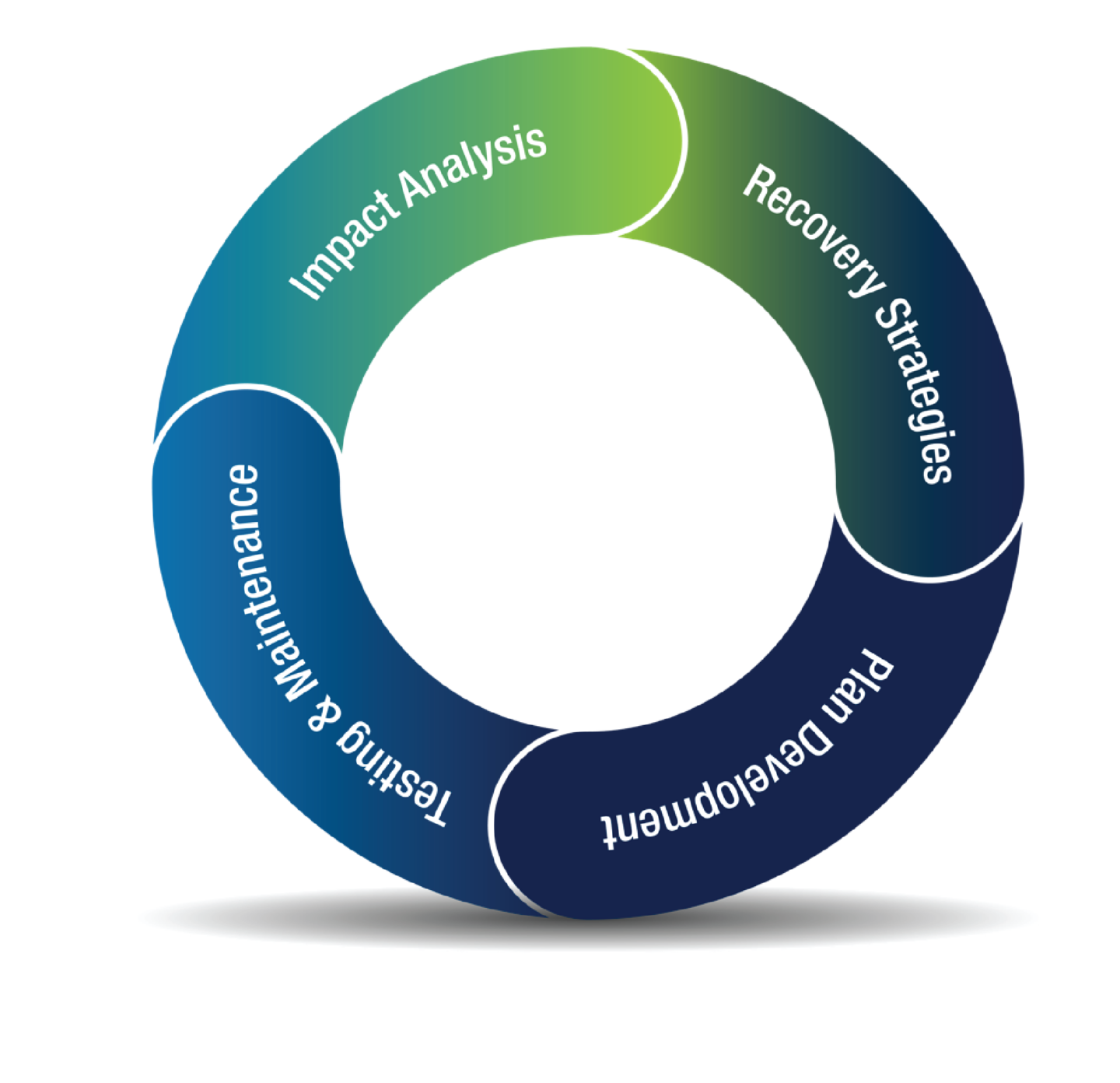DATA PROTECTION TRENDS, NEWS & BACKUP TIPS
5 Powerful Disaster Recovery Strategies

Strategy #1: Establish a Robust Disaster Recovery Framework
When constructing your disaster recovery plan, it’s not merely about checking off boxes. It involves delving into impact analysis to formulate disaster recovery strategies, meticulous planning, and ongoing testing and maintenance.
To bolster your plan:
- Conduct a comprehensive risk assessment to pinpoint potential threats.
- Define recovery objectives, including Recovery Time Objectives (RTOs) and Recovery Point Objectives (RPOs).
- Develop a communication plan to ensure effective information dissemination.
- Document and regularly update your plan to accommodate changes.
- Train and educate your team on their roles and responsibilities.
For further improvement, download our
Disaster Recovery Planning Ahead ebook.
Strategy #2: Involve the Right People in Disaster Recovery Planning
You may have your DR plan mapped out, but what about the human aspect? Conversations with customers reveal that while they’ve sorted out technical aspects, internal communication remains a puzzle. Identifying the right individuals can significantly impact your strategy. Here’s who you should rally:
- Executive Leadership Team: Provide strategic direction and allocate resources.
- IT Department: Possess technical expertise and manage IT infrastructure.
- Data Owners and Custodians: Understand data importance and offer insights.
- Business Continuity Management Team: Focus on maintaining essential functions.
- Legal and Compliance Officers: Provide guidance on regulatory requirements.
- Risk Management Team: Assess potential threats and vulnerabilities.
- External Service Providers: Coordinate recovery efforts if applicable.
Incorporating these stakeholders ensures comprehensive coverage, tailored to your business needs.
Strategy #3: Continual Improvement in Disaster Recovery Planning
Continual improvement in disaster recovery planning is like fine-tuning your safety net for the unpredictable. Picture this: disasters don’t stick to a script. They change, morph, and surprise us. So, it’s crucial to keep updating our playbook. By constantly tweaking and refining our disaster recovery strategies, we’re not just preparing for what we know; we’re gearing up for what we don’t.

Think of it as a workout routine for your organization’s resilience. Test, learn, and adapt. It’s not just about having a plan; it’s about making sure that plan can handle whatever curveballs come our way. Whether it’s a tech glitch or a natural disaster, continual improvement ensures you are ready to bounce back stronger each time.
Strategy #4: Utilize Artificial Intelligence (AI) in Disaster Recovery
As AI and ML get smarter, cybercriminals get craftier. They’re using these tools to predict and outsmart defenses, getting a leg up in their attacks. But here’s the deal: learning how to use AI to your advantage is key. It’s like flipping the script, by understanding AI, you can strengthen your defenses and stay one step ahead of the game.
Integrating Artificial Intelligence (AI) into your disaster recovery strategy offers a substantial boost in both effectiveness and efficiency. AI technologies streamline the recovery process by automating tasks, resulting in quicker response times and more precise decision-making.
Veeam has recently introduced cutting-edge AI capabilities. Their AI chatbot serves as a valuable resource, guiding users through product usage and addressing queries on various aspects such as back copy jobs, replication, and CDP requirements.
Strategy #5: Elevate Disaster Preparedness with Expert BaaS and DRaaS Management
Have you ever wondered what happens to your data in a traditional backup scenario during a disaster?
More often than not, you’ll experience increased data loss because backups aren’t as frequent. However, with the right expertise managing Backup as a Service (BaaS) and Disaster Recovery as a Service (DRaaS), you can be back up and running within a few hours.
When you partner with data protection experts like CyberFortress & Veeam for BaaS and DRaaS, you’re not just shipping your backups off to a distant cloud and crossing your fingers. Here’s what you get:
- Expertise and Reliability: Tailored solutions designed, implemented, and managed by experts.
- Scalability and Flexibility: Easily adjust services to match your business’s growth and changing needs.
- Cost-Effectiveness and Efficiency: Save on expenses compared to maintaining in-house solutions while ensuring optimal performance and security.
To further test your knowledge or explore more about comprehensive disaster recovery planning, be sure to visit our Disaster Recovery Test Questions page.







